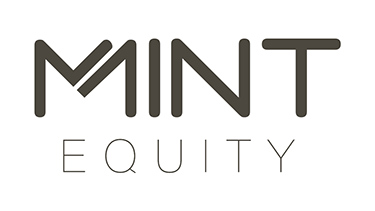We delve into the critical question of whether lower inflation figures will lead the Reserve Bank of Australia (RBA) to reconsider its stance on interest rate increases. As economic indicators fluctuate, understanding the RBA's response to inflationary pressures becomes paramount for investors, borrowers, and the broader financial landscape.
Gain insights from our Director and Mortgage Broker, Zac Peteh, as he shares his expert analysis on the potential impact of the latest inflation data on the Reserve Bank of Australia's (RBA) upcoming decision regarding the cash rate.
With recent lower than expected inflation data, what are your insights on how this may influence the current mortgage landscape?
At this point, inflation data holds little relevance in influencing the RBA's decisions on adjusting the cash rate. Despite major economists utilising the data to predict changes, the past 12 months have demonstrated the lack of consistent scientific basis behind the RBA's actions.
In fact, Michele Bullock has asserted that achieving the RBA's inflation target of 2-3% requires an increase in unemployment. The RBA’s objective can be accomplished by creating financial pressure on businesses through interest rate increases, compelling them to reduce staff numbers. The most direct method to achieve a higher unemployment rate is to raise operational costs to a level where immediate cost-cutting measures become necessary. While other cost reduction strategies may have a time lag, redundancies have an instant impact on a company's profit and cash flow.
Do you think the RBA still has a few more rate rises to go?
Consequently, more rate increases are on the horizon to drive up unemployment rates. The upcoming rounds of rate hikes will primarily focus on businesses' debt, but as a byproduct, consumer home loans will also be affected. Whilst inflation is dropping, it’s moving at a snail’s pace - therefore, the RBA may need to accelerate inflation movement by initiating another cash rate increase in August. There may be a second cash rate move in September or October before a pause heading into the Christmas period.
During periods of lower inflation, what opportunities might borrowers have in terms of securing favourable mortgage terms and rates?
Borrowers won't experience any advantages from inflation in the foreseeable future. The cost-of-living benchmarks set by banks will remain unchanged for a considerable period. Until we have a prolonged period of stable low inflation, banks are unlikely to adjust their living expenses calculations or the HEM (Household Expenditure Measure).
However, there is a positive development where several lenders are reducing the serviceability buffer to 1% for dollar-to-dollar refinances through discretionary interest rate buffer reductions. This change is particularly beneficial for those categorised as "mortgage prisoners," as it enables them to refinance to more competitive interest rates.
How do you assess the potential impact of low inflation on the overall housing market, and what do you foresee in terms of housing demand and affordability?
During periods of low inflation, there is a noticeable surge in housing activity, encompassing not only buying and selling properties but also an increase in renovations, upgrades, and investments in furnishings. Australians take great pride in their homes, and when they have spare funds, they often choose to channel it into enhancing their living spaces. This trend is particularly pronounced due to the constant influx of migrants and a scarcity of both existing and new housing options, adding to the already high demand during inflationary times.
Surprisingly, property prices haven't sufficiently decreased to improve overall housing affordability, which is what one would typically expect when interest rates are increased. Despite this, the desire to own homes remains strong among Australians. In fact, in the last three months, more than 70% of new loan enquiries we’ve received have been from prospective buyers looking to make a purchase, with only 30% seeking refinancing options. This suggests that buyers can still afford to enter the housing market, despite the prevailing circumstances.
Do lower inflation numbers impact your recommendations for clients regarding fixed-rate versus adjustable-rate mortgages?
When engaging with clients, Australian inflation data is just a small piece of the larger conversation, especially considering that the RBA cash rate changes are influenced by various metrics. Our approach to making recommendations takes into account a broader perspective, encompassing international factors that can impact the Australian economy. For instance, we closely observe the movements of the US Federal Reserve and US inflation data, which can offer valuable insights into potential actions by our own RBA.
Presently, inflation is experiencing a rapid decline in the USA due to the recovery in production and the supply chain. However, despite inflation dropping to 3% in June, the US Federal Reserve has opted to keep its cash rate unchanged rather than reducing it. They seem inclined to maintain this stance until a stable inflation rate is established.
When making decisions that may have implications for our clients over the next 1 to 2 years, we understand that isolating one element, such as Australian inflation data, is insufficient. Instead, we consider a comprehensive range of factors to ensure well-informed and well-rounded recommendations.
Photo credit: Photo by Sarah Chai


